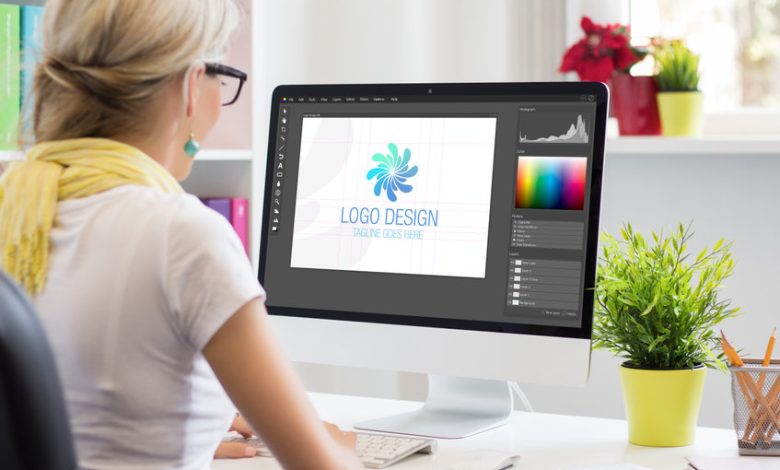10 Logo Design Principles Designers Should Take to Heart

Logo designing is an in-demand skill these days. With the rapid development of ecommerce, there is no doubt that getting a nice logo is way easier.
And now that many more applications and software are available to use for free, freelancing logo-makers also have various platforms to practice. However, to become a professional designer, you always need to pay and get premium features.
Most ecommerce businesses use these features, but many don’t! You can start today with tools like Canva, Wix Logo Maker, and 99 Designs. Even then, they can carry out efficient branding and develop a good audience.
However, if you wish to take a degree and become a professional, go on! Design is a field many take along as a side gig, but it might need more attention than that. The eCommerce market is pumped up, and many new start-ups always need a logo maker that can represent them.
As a freelance logo maker, you might have to work harder to make so many samples. Each client has separate requirements, and not without a few samples is what needs to be met. To help samples reach their target quickly, we have some basic logo design principles for you.
Even expert and skilled logo designers forget to add or keep at least one of these in mind. If you’re just a beginner, keep these in mind and take them to your heart!
List of Logo Design Principles for Designers
#1) Simplicity in Design
A brand needs a simple design. Something that isn’t too overly fancy but also catches the eye. Now, if you’re working as a freelancer, it isn’t easy to understand a business’s core values just by talking to the client.
You need to visit the website and check out the products the brand sells. You might also need to check the taglines and social media captions to judge better. Remember, when you’re keeping things simple, you must keep them to the point.
The key to making a simple logo suit the brand’s custom needs is ‘in the bigger picture.’ Notice what colors a brand uses, the fonts and don’t combinations, and the tone of its taglines.
#2) Knowing The Target Audience
This is one of the most crucial logo design principles. You should know the brand’s audience before you begin working on logos for them. If a client comes up to you on Upwork or Fiverr, you won’t have much access to their audience.
However, you can guess by seeing the brand’s look, whether it’s for teenage girls or adult men. Similarly, the Instagram page or website also gives a vibe of what their audience might be.
For this purpose, you can also check brand comments, captions, and website reviews. While all this is necessary, you can also ask the client themselves to give you an insight into the audience.
#3) Outline First, Color Later
It’s better to make designs first in black and white. This is a tip only the most expert and experienced designers will give you. That is because you learn only after working with several clients for a long time that B&W is better.
In this version, your clients can easily judge if they like the design in the various versions they might give it. They can also have a say in what colors, effects, or gradients you should use. Usually, more sharp, diverse, and fancy colors are used in brands that aim at small kids.
But when it comes to adult men, the colors are much less vibrant. They are more likely to be a version of brown, grey, or black.
#4) Sketch First, Fair Later (Do Rough Work)
Don’t overdo anything. Include everything just as much as necessary. If you make something too fancy even while using the right colors, the client is more likely to disapprove of it because it’s no use.
The best solution that we give among our logo design principles here is to make the rough sketch first. Your boss will always accept it if you clearly show the design as a rough idea. However, you must be good at drawing things, even if you’re making a digital drawing.
#5) Add Movement to The Design
This is a common trend people have been using in their designs lately. One of the logo design principles that came from the animation concept is ‘motion.’ Logo makers have also started adding motion or movement to their designs to make them more appealing.
Many brands wish to show their delivery speed or flow of operations as a unique selling point. For such businesses, logo design services often make motion-oriented designs.
#6) Scalability
Many newbie designers don’t quite understand the concept of scalability. Being scalable means you have to design the logo so that it looks good on every device, even if stretched out a little bit.
Now transformations like stretching a logo can ruin the look, but not if you use a combination of shapes and colors rather than just one. There are also many other techniques you can use for this purpose.
Remember that brands with both a website and an app need this most. This is because their customers are accessing the app from a mobile phone. Things are different in a phone or even in a phone’s desktop settings.
#7) Make It Memorable
Now, this isn’t something so different from making a ‘catchy ‘logo. When your logo catches the eye of the customer or target audience, sales rise. If someone is scrolling through their Instagram and finds a profile with the logo as the display picture.
They are more likely to tap and check out a brand’s social media and website if the logo seems interesting. Now it’s your own choice! Some designers add interest by making the users curious, some add a solid tagline, and others just give a holistic vibe.
#8) A Design That Doesn’t Age
A brand often changes its look from time to time. For instance, just look at how many times Coca-Cola changes its look. However, logos aren’t something that business changes. Specifically, if the brand wishes to continue for a long time, it will never change its logo.
Therefore, you have to make a design that lasts long, and people always find it more than just a brand’s monogram. For instance, look at the logo of Pepsi or McDonald’s. You won’t feel like it’s a sign. Instead, they look like representations of an audience, an army, or a vibe.
#9) Typography Tips
Designers often either make typographic logos or ones based on symbols. Therefore, this one among our list of logo design principles is rather different. We suggest that you combine typography with symbols.
This can better represent the brand since it would also instantly tell viewers the name.
#10) Check The Market
A useful tip is to always check the competitor’s logos. Some might argue that this might make the designer take inspiration from other brands, and they won’t make original work. However, you might get useful ideas about setting the right theme for the brand.
Conclusion:
In conclusion, logo-making isn’t as easy as it sounds to newbies. It’s not just about designing or using the software. It is the core of branding!




